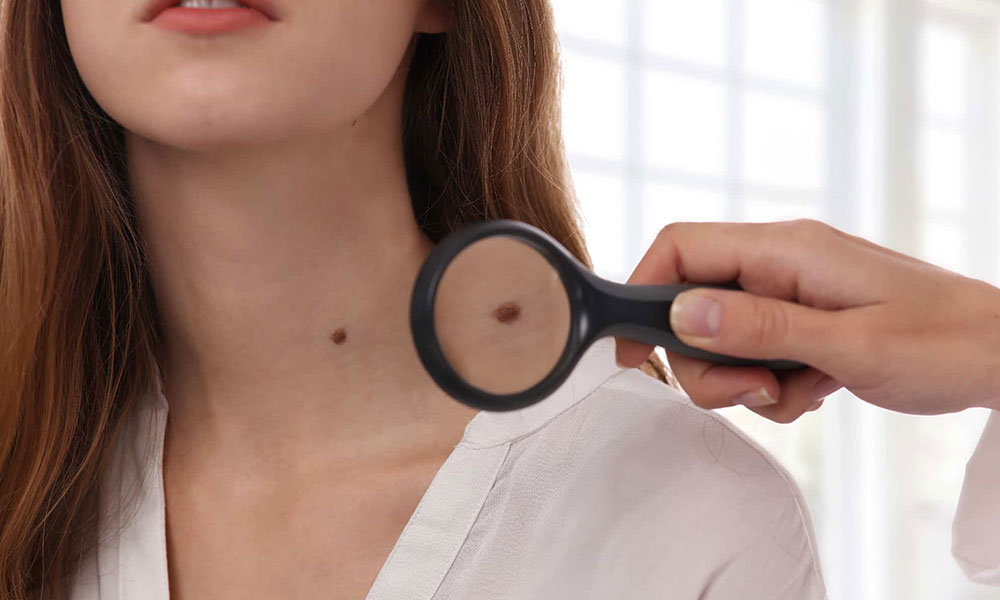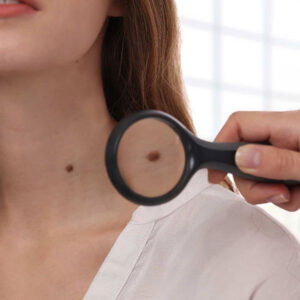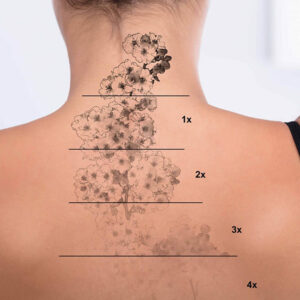
The process of removing the moles that we do not want in our body and that threaten our health, by various methods, is called Mole Treatment. A mole (nevus) is formed as a result of irregular collection of melanin pigment, which gives color to the skin. Moles that can be seen all over the body can sometimes cause skin cancer. Accordingly, it is of great importance for the health of the patient to be checked regularly and to remove the moles when the diagnosis is made.
It is normal and expected to see new moles on the body until the thirties. As a matter of fact, in the thirties, the body cannot give pigment as before, and even some moles become pale. For this reason, it is abnormal to see dark moles in middle age and should be checked.
Moles can be removed by various methods on the grounds that they create an aesthetic disorder or are unhealthy. If the person has more than 50 moles on her/his body and has light skin, it is recommended to regularly check the moles and have dermatoscopy (mole mapping). These people have a higher risk of developing malignant melanoma.
Conditions at risk for malignant melanoma include:
- Seeing new moles in middle age,
- Moles are asymmetrical,
- Darkening of moles, color transition,
- Growth of moles,
- Bleeding or inflammation of moles
- The borders of the moles are not clear, they have a lace appearance,
- Having a family history of melanoma.
What are the Moles Types?
Birth Moles
Birth moles are black and hairy moles that appear on the skin of newborn babies. Birth moles tend to be more malignant than other moles. Therefore, care should be taken to keep it under control and not to exceed 20 cm in diameter. Moles larger than 20 cm are more likely to be malignant. These moles can be removed when a specialist doctor decides.
Atypical Moles
Atypical moles are larger than normal moles. There is a risk of melanoma in these moles, which have a dark center and a lighter color towards the periphery. It is taken from the body when the color and swelling are observed.
Flesh Moles
Flesh moles are a simple and prominent type of mole that is frequently seen in people. There is no risk of melanoma for flesh moles, especially in sweaty areas. It can be taken with radiofrequency or laser.
Fractional Laser
Fractional laser is a mole removal method that fires thousands of microscopic shots and triggers skin regeneration in the damaged (mole) area and provides peeling.
Er Yag Laser
Er Yag Laser is a successful mole removal method that can reach deep into the skin with rays, evaporate the damaged tissue and renew the skin.
CO2 Laser
CO2, Carbon Dioxide laser, is a mole removal method that creates controlled destruction by reaching the desired tissue in one shot, destroying the damaged tissue and providing skin regeneration.
How is Laser Mole Removal Performed?
Although laser devices vary in laser mole removal, in general, the function of the laser on mole is the same. The rays at a certain temperature emanating from the laser are absorbed by the dark moles that are desired to be taken, and they are destroyed as a result of this absorption. Instead of the destroyed mole separated from the tissue, the skin produces new tissue and regeneration takes place.
Is Laser Moles Removal Harmful? Will there be traces?
Lasers used in mole removal are devices that are used in many fields of medicine and have no side effects and harm. Although there is no harm in laser mole removal, it also provides regeneration of the skin. Since there is skin regeneration, there are no traces where the mole is located.
In How Many Sessions Is the Laser Mole Removal Application Completed?
Laser mole removal gives results between 1-5 sessions. This may vary depending on the depth and type of mole. After the examination, the specialist doctor will tell the patient how many sessions will be required for the complete removal of the mole.
How long does laser mole removal take?
Laser mole removal is not a surgical operation. The duration of laser mole removal, which is a very practical application, varies according to the number of moles to be removed. This time can be 2 minutes or 30 minutes.
Is Pain and Suffer Felt in Laser Mole Removal?
Laser mole removal is a very painless procedure. Therefore, no anesthesia is applied before the application. Slight pain may be felt during the procedure.
What should be considered after laser mole removal?
After laser mole removal, the patient can return to her/his daily life. After the application, a slight burning sensation and sensitivity may continue. This is a side effect that will go away in a few hours. In addition, there are some differences in the recovery period after the procedure. Rashes can be seen in the treated area for one to two days. These rashes then turn into crusts and peel off on their own. Peeling should not be interfered by hand.
After laser mole removal, as in many laser applications, it is important to protect the treated area from the sun. After the procedure, the area should not be exposed to the sun directly for about 6 months, and sunscreens with high protection factor should be used.
After the procedure, light moisturizers and cosmetic products approved by the doctor can be used. It is recommended to pay attention to keeping the area clean.








